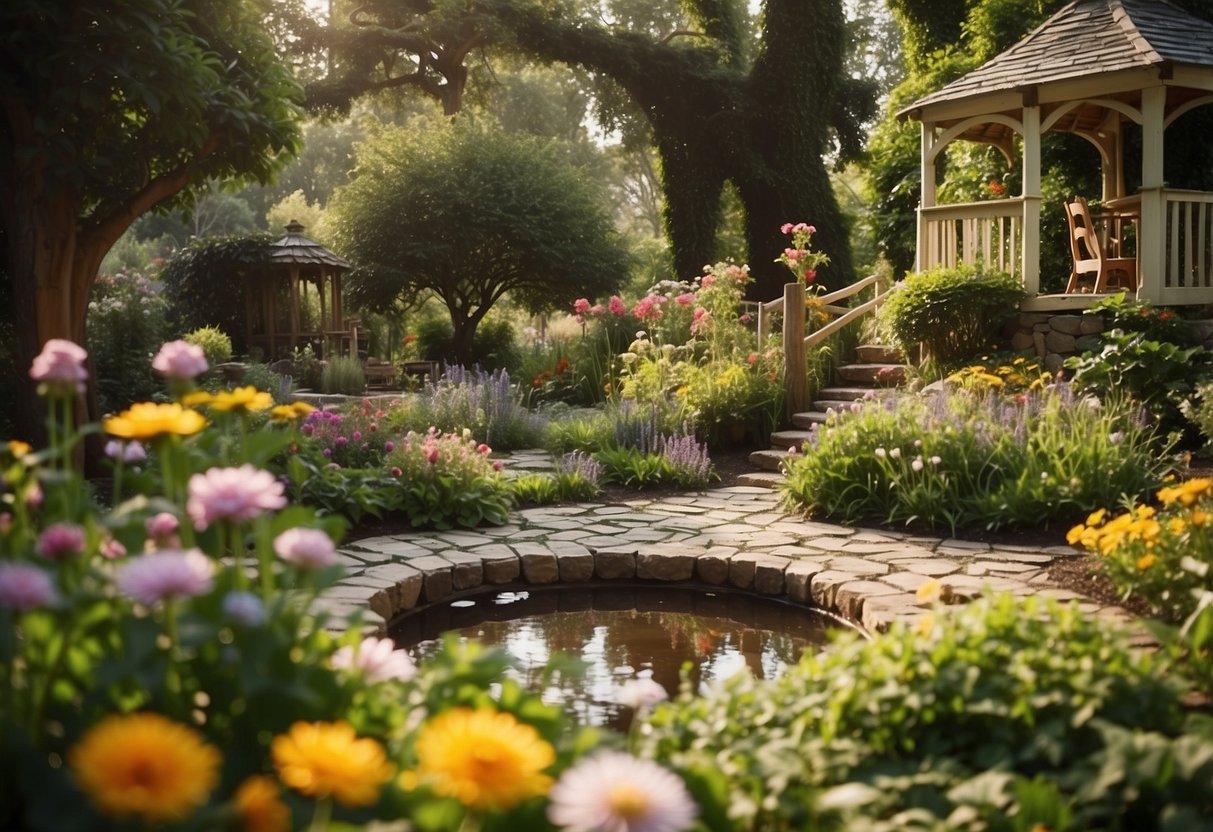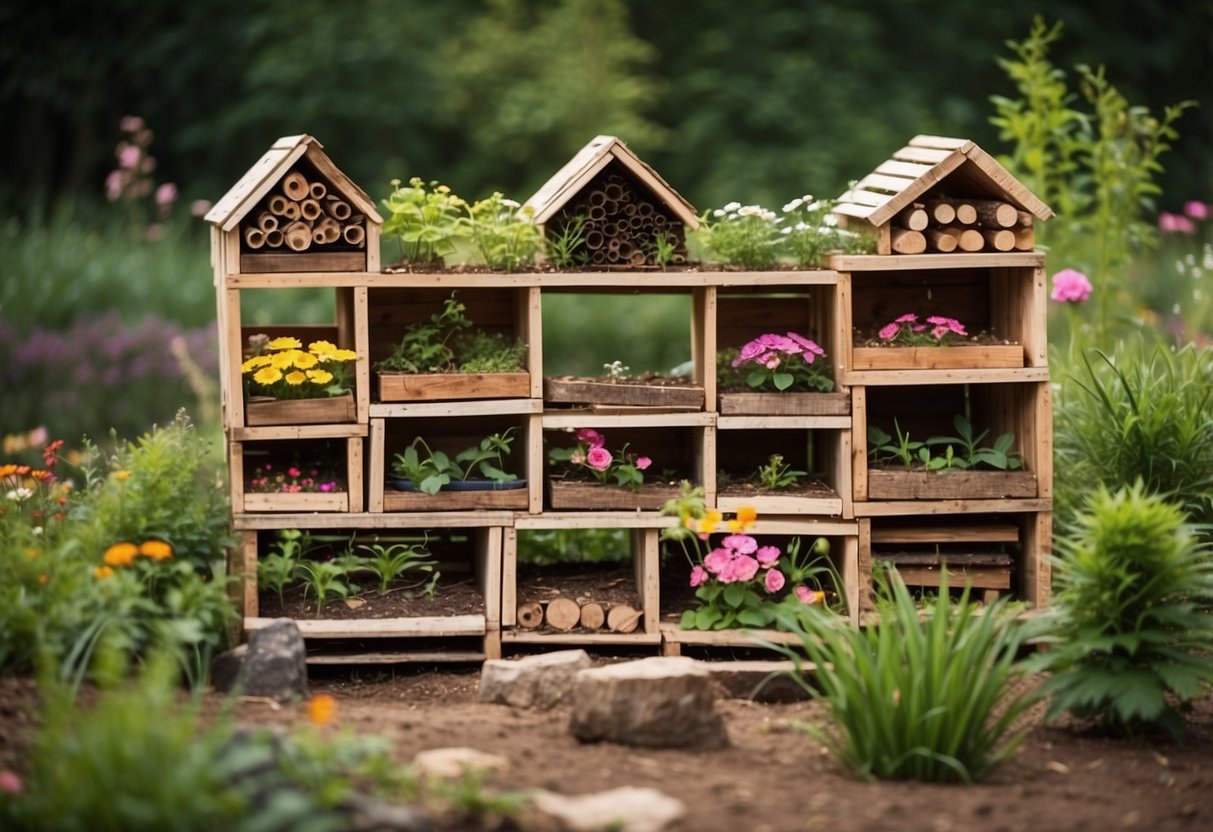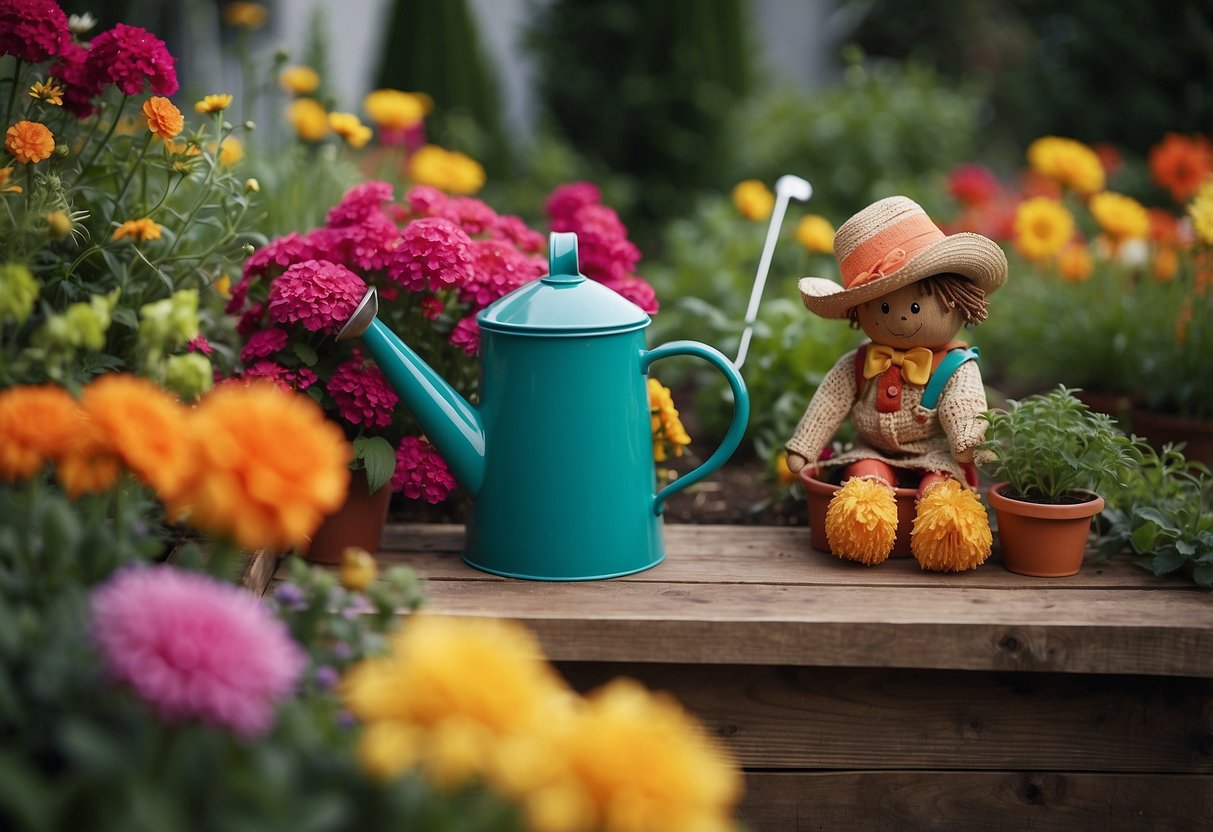Garden Ideas for 10 Year Olds: Fun and Educational Projects
Gardening is an exciting and rewarding hobby that can keep 10-year-olds engaged and active. It’s a fantastic way to get them outdoors, learn about nature, and develop new skills. With some imagination and the right projects, your child can have fun while making the garden a lively and colorful place.

What are some fun and engaging garden ideas for 10-year-olds? Whether it’s planting, crafting, or learning about different plants, there are numerous activities that can inspire creativity and curiosity in your child’s gardening journey.
1) Grow a Sunflower House

A sunflower house is a great way to get outside and enjoy some gardening.
Start by picking sunflower varieties like the Giant Gray Stripe or Mammoth Sunflowers which can grow really tall.
Plant the seeds in a square or rectangle pattern, leaving space for a door.
As the sunflowers grow, they will form “walls” you can play inside.
This project combines creativity and nature, making a fun space in your own garden.
2) Paint Garden Rocks

Painting garden rocks is a fun and creative project for 10 year olds. Start by choosing some smooth rocks from outside. Wash and dry them well.
Paint a base coat on each rock. Use bright colors to make them stand out. Then, add details like flowers, bugs, or patterns.
Once the paint dries, you can place the rocks in the garden. This adds a personal touch and brightens up the space. You can even write plant names on the rocks to label your garden.
3) Create a Fairy Garden

Starting a fairy garden is a fun and magical project for kids. You can use a small flower pot to keep it simple. Fill it with kid-friendly plants like marigolds, petunias, and moss.
Add a fairy house to create a focal point. Decorate with tiny accessories like fairy figures, benches, and pebbles. This brings the garden to life.
Make sure your container has good drainage. Add drainage holes to avoid water buildup. Whether you use real or faux plants, the end result will be enchanting for any 10-year-old.
4) Build a Bug Hotel

Creating a bug hotel is a fun way to attract helpful insects to your garden. Start by finding some recycled materials like bricks, wooden pallets, or old logs.
Next, fill the spaces with natural items such as leaves, straw, pinecones, and sticks to create cozy spots for bugs.
Place your bug hotel in a shady area that gets morning sun. Happy building!
5) Make a Bird Feeder

Making a bird feeder is a fun and easy project that lets you enjoy watching birds up close. You can create a simple feeder using items found at home.
You can make a feeder with a cardboard tube and some birdseed. Just spread peanut butter on the tube, roll it in birdseed, and hang it up.
Another idea is to use a pine cone. Cover it with peanut butter, roll it in birdseed, and hang it from a tree branch. You’ll have birds visiting your garden in no time!
Try using different materials like old teacups or plastic bottles to create unique bird feeders. Have fun experimenting!
6) Plant a Butterfly Garden

Planting a butterfly garden can be fun for you and your 10-year-old. Choose a small space, even as tiny as 3 feet by 6 feet. This can fit enough flowers to attract butterflies.
Add large, flat rocks in sunny spots for butterflies to warm themselves on cool mornings. Provide a “puddle” by filling a container with wet sand where butterflies can safely drink.
Plant a mix of flowers and plants that caterpillars and butterflies love. Native plants are best, as they attract local butterfly species. Aim for colorful flowers and avoid exotic plants that may not attract butterflies. For more ideas, check out Butterfly Gardening for Children.
7) Grow a Pizza Garden

A pizza garden is a fun and tasty way to get into gardening.
Start by choosing a sunny spot in your yard or use a large container.
Plant ingredients like tomatoes, basil, oregano, and bell peppers.
Make sure to support your tomato plants with a cage or stakes.
Water regularly and enjoy watching your pizza garden thrive.
8) Craft a Wind Chime

Making a wind chime is a fun way to spend time outdoors. You can use things you already have at home, like plastic water bottles, paper cups, or old gardening pots.
Add some beads and string to make it colorful. Hang it in your garden and listen to the beautiful sounds when the wind blows.
For more ideas, check out these wind chime crafts.
9) Start a Worm Compost

Starting a worm compost is a fun and eco-friendly project. You can set it up indoors or outdoors, making it a great year-round activity.
You’ll need a bin, bedding like soil or shredded cardboard, and food scraps. Add red wiggler worms, which are great for composting.
As the worms eat, they produce compost that helps your garden. Watch how veggie scraps turn into nutrient-rich soil! It’s an easy way for you to care for “livestock” on a small scale.
For more details on setting up, check out this guide. Happy composting!
10) Design a Mini Pond

Creating a mini pond can be a fun project for you. It brings a touch of nature to your garden and is simple to do.
First, find a small container like a barrel or a large bowl. Fill it with water and add some pebbles at the bottom.
Next, choose some water plants. They can be floating plants or those that grow in shallow water. Collect rainwater for a healthier pond environment.
Make sure to check out more small pond ideas for inspiration. Your mini pond will become a cozy home for small fish or frogs!
Understanding the Basics of Kid-Friendly Gardening

Encouraging children to garden can be both educational and fun. The key is to match tasks to their age and use the right tools and materials to keep them engaged and safe.
Age-Appropriate Tasks
It’s important to choose gardening activities that match your child’s age and abilities. Younger kids, around 5 to 7 years old, can help with simple tasks like watering plants or collecting fallen leaves. These activities are easy for them and help develop their motor skills.
Older kids, like 8 to 10 year olds, can handle more complex jobs. They might enjoy planting seeds, pulling weeds, or even assisting in making compost. These tasks not only teach responsibility but also offer a sense of achievement.
For very young children, make sure all tasks are closely supervised. Safety is a priority, so keep sharp tools and harmful chemicals out of reach.
Essential Tools and Materials
Having the right tools can make gardening more enjoyable for kids. Here are some essential items to consider:
- Kid-sized gloves: Protect their hands from dirt and potential injuries.
- Small spades and trowels: Perfect for little hands to dig and plant.
- Watering cans: Light enough for kids to carry but still effective.
It’s also helpful to have a few specific materials:
- Peat-free compost: Ideal for planting and safe for kids.
- Seeds or seedlings: Choose easy-to-grow plants like sunflowers or beans.
- Containers: Small pots or raised beds work well for garden projects.
Using these tools and materials, kids can easily learn and enjoy the process of gardening, making it a rewarding hobby for them.
Creative Gardening Projects

These projects will engage your 10-year-old in making unique garden decorations and creating themed garden spaces.
DIY Garden Decor
Making your own garden decor can be both fun and educational. Try creating a DIY bird bath using old dishes or flower pots. It’s simple and the birds will love it. Another idea is to make painted stone garden markers. Use rocks and paint to mark different plants or vegetables.
Chalkboard paint plant markers are also a great project. Paint some wooden sticks with chalkboard paint, and let your kids write plant names. This activity is not only creative but also helps them learn about plants.
You can also make a butterfly feeder. Use a shallow dish, some water, and sugar to attract butterflies. Put it on a stand or hang it from a tree branch. Children will enjoy seeing butterflies visit the garden.
Theme Gardens for Kids
Creating a theme garden can make gardening more exciting. Start with a pizza garden. Choose a spot and plant tomatoes, basil, oregano, and peppers. Your child will enjoy watching the ingredients grow and later using them to make pizza.
Another idea is a fairy garden. Use small plants, tiny decorations, and a little house to create a magical space. Your child can take care of the garden and add new elements over time.
You might also try a scented garden with plants like lavender, mint, and rosemary. This not only makes the garden smell good but also teaches your child about different herbs and their uses.
For more ideas, explore other themed gardens like a butterfly garden with nectar-rich flowers or a vegetable garden.
Maintaining a Safe and Fun Garden Space

Ensuring your garden is both safe and engaging for 10 year olds involves careful planning and adding interesting activities. Here’s how you can achieve that.
Safety Tips
Keeping children safe in the garden is crucial. Monitor plant choices to avoid toxic plants which might be harmful if touched or ingested. Examples of safe plants include marigolds and sunflowers.
Set up clear boundaries to keep children away from potentially dangerous equipment and areas. Use a fence or garden markers to designate areas that are off-limits.
Store tools safely. Sharp tools should be kept out of reach. Use brightly colored, child-sized gardening tools that are safer and easier for children to handle.
Supervise water features. If you have ponds or water fountains, make sure they are shallow and covered when not in use. Adding secure lids or gates can prevent accidents.
Provide shade and hydration. Ensure there are shaded areas and remind children to drink water frequently, especially on hot days. This can prevent overheating and sunburns.
Encouraging Continued Engagement
To keep children interested in the garden, introduce interactive activities such as planting a veggie patch. Let them choose seeds and be responsible for watering and weeding. This fosters a sense of ownership and excitement.
Create a discovery garden filled with tree-stump stepping stones, which can be turned into games or obstacles. Making a fence mural together can also be a fun art project that enhances creativity.
Incorporate educational elements like labeling plants with their names and facts. Use simple signs to teach kids about the different plants and their uses.
Plan seasonal projects. For example, you can have a DIY birdhouse project in spring or leaf collection in fall. Seasonal activities keep the garden dynamic and aligned with the natural cycles.
Invite friends for garden playdates. Sharing the space with friends can make garden time more social and enjoyable.
Making your garden a safe and fun place ensures that children can explore and learn without worry.







